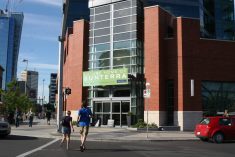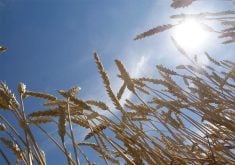WINNIPEG – Severe flooding in Manitoba has hurt aboriginal people more than most, forcing them to leave poorly protected homes in low-lying areas.
At least 1,100 people have left their homes in Manitoba, mostly from Indian reserves, according to official figures, but the real number is believed to be hundreds higher.
A lack of safe road access due to rising floodwater is the main reason for the evacuations.
Still, that’s only a fraction of the 28,000 people evacuated in Manitoba during the record 1997 flood when protection was weaker.
Read Also

Trade war may create Canadian economic opportunities
Canada’s current tariff woes could open chances for long-term economic growth and a stronger Canadian economy, consultant says — It’s happened before.
The Red River, which runs north from the U.S. Plains states of North Dakota and Minnesota into Manitoba, is approaching crest levels among the highest on record.
Flooding on many smaller rivers across Manitoba and Saskatchewan compounds the problem, creating what government officials say is the biggest flood-affected area on record in the region.
It’s the second year in the past three that Donovan Nelson and Nadine Shingoose have packed up their eight children and left Roseau River Anishinabe First Nation reserve in the flood plain south of Winnipeg.
The Roseau reserve is surrounded by a dike, but concerns have emerged about weak spots.
All 1,000 residents on the reserve will have evacuated their homes by Monday evening.
“Homes are not damaged or nothing. (It’s) a precaution,” said Nelson outside the hotel in which his family is staying in Winnipeg.
The location of some Indian reserves in flood-prone areas makes them vulnerable and some are not as well protected as non-aboriginal communities, a provincial government spokesperson said.
In Saskatchewan, nearly 700 people evacuated from First Nations reserves over the past couple weeks had returned to their homes by last weekend.
There were still some families from the Cowessess, Sakimay and Ochapowace First Nations on Crooked and Round lakes who could not return due to damage to their homes.
Duane McKay, provincial director of emergency response, said new evacuations included a family at Lebret and some who voluntarily left their homes at B-Say-Tah on Echo Lake.
Officials were working with several other First Nations on flood prevention measures.
Final preparations are also underway in the southwest.
“We’re probably ready for what Mother Nature might send our way down there,” he said.















